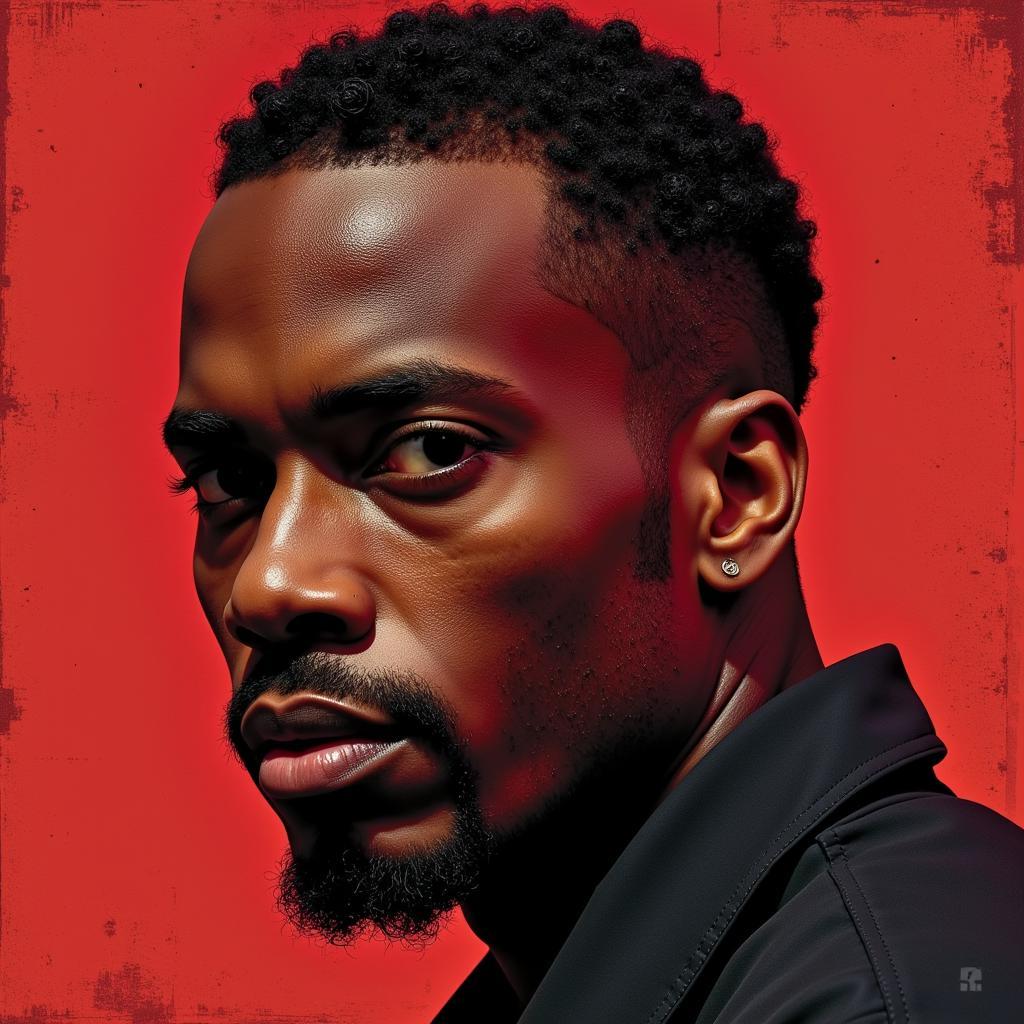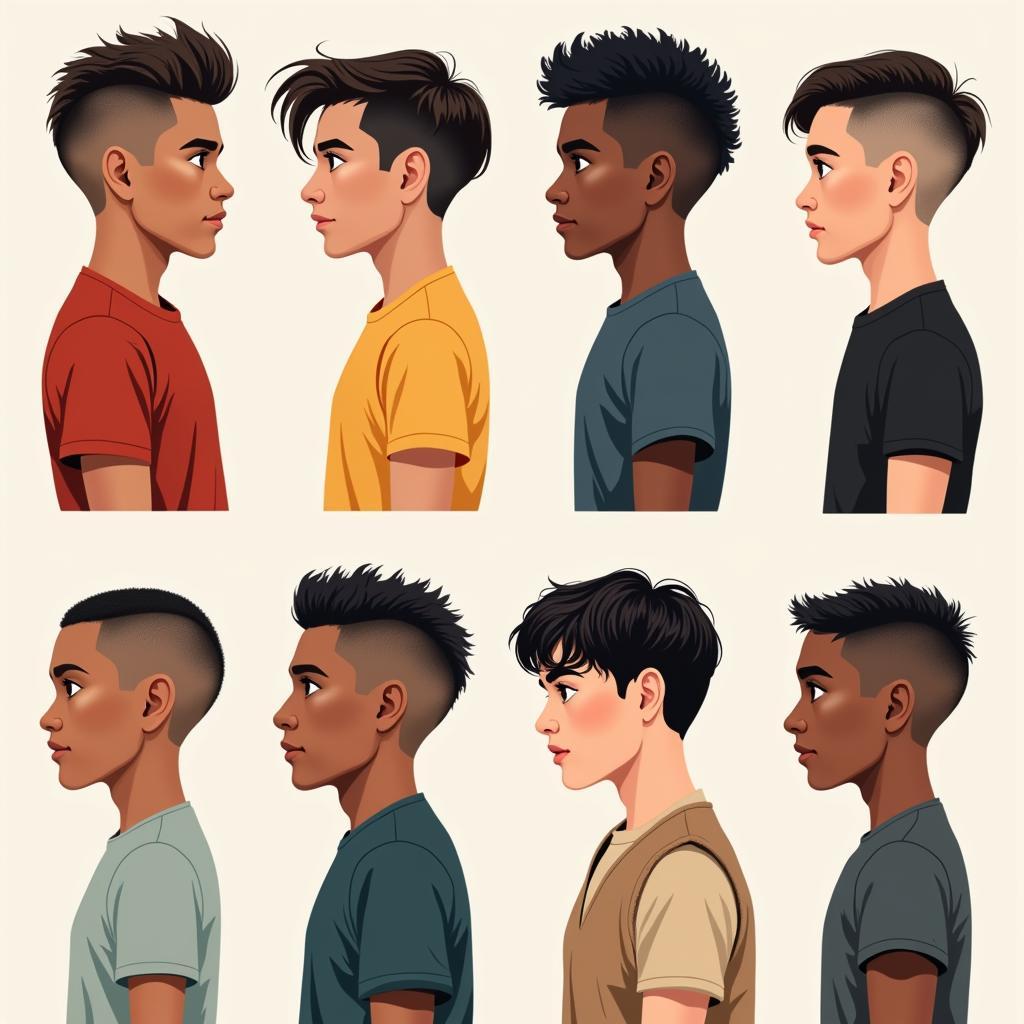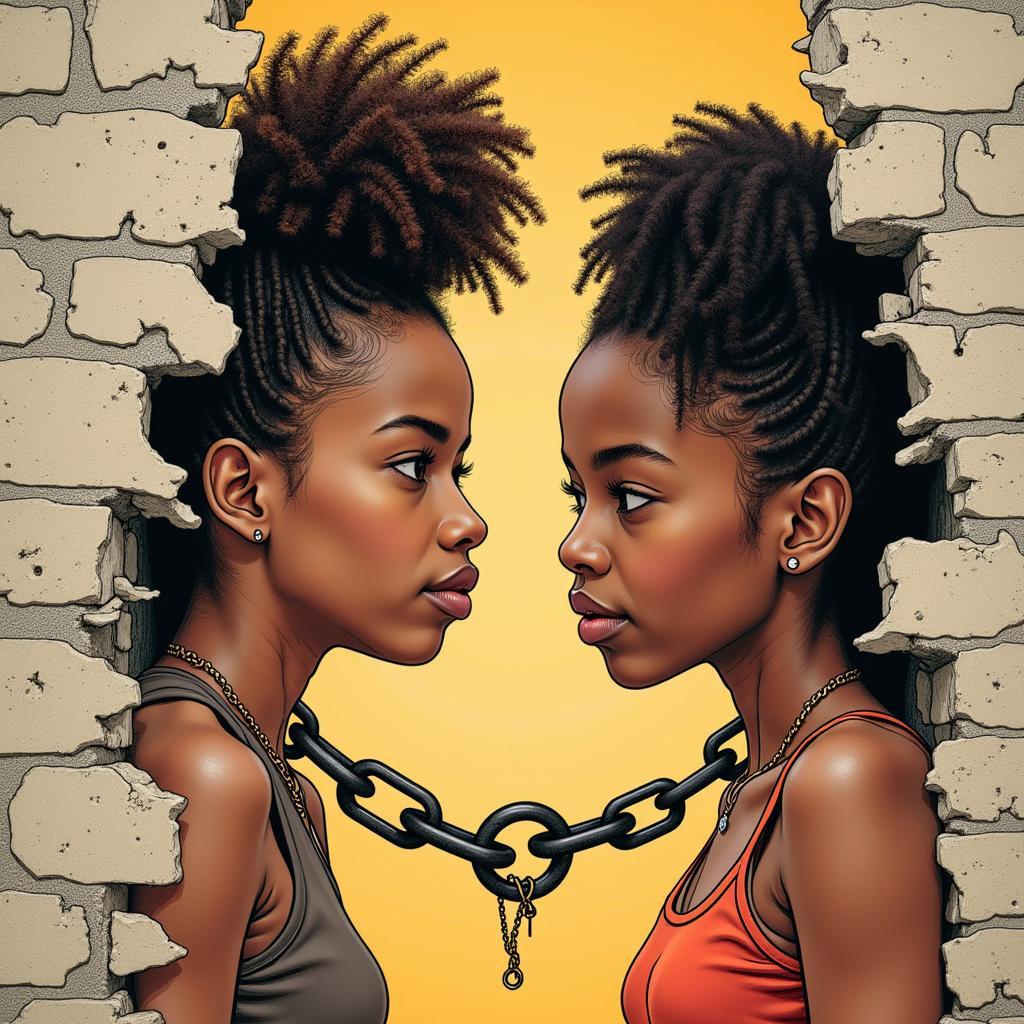The “Menace To Society Hairstyle” often conjures up images of the iconic buzz cut worn by O-Dog in the 1993 film. But beyond its cinematic representation, this hairstyle carries a complex history and social significance that extends far beyond a simple haircut. It’s important to delve into the cultural context, societal perceptions, and the potential for misinterpretation surrounding this specific look.
Unpacking the “Menace to Society Hairstyle”
The close-cropped cut, popularized by the film, became synonymous with a certain image of young Black men in the 90s. This image, unfortunately, was often linked to stereotypes of aggression, rebellion, and criminality. It’s crucial to understand that a hairstyle, in and of itself, cannot define a person’s character or intentions. The “menace to society hairstyle” became a visual shorthand, laden with societal biases and preconceived notions. This association, though unfair and inaccurate, became deeply ingrained in the public consciousness.
The Impact of Media Representation
The media plays a powerful role in shaping public perception. The portrayal of characters with specific hairstyles, like the buzz cut in “Menace II Society,” can contribute to the perpetuation of stereotypes. This association, while unintentional at times, can have real-world consequences for individuals who choose to wear similar styles. They may face undue scrutiny, prejudice, and even discrimination based solely on their appearance.
 Menace II Society Movie Poster Featuring O-Dog's Buzz Cut Hairstyle
Menace II Society Movie Poster Featuring O-Dog's Buzz Cut Hairstyle
Beyond the Stereotype: Individual Expression
It’s essential to remember that individuals choose hairstyles for a variety of personal reasons, including practicality, aesthetics, and self-expression. The buzz cut, for many, is a low-maintenance and functional choice, especially in warmer climates. It can also be a powerful statement of identity and cultural affiliation. To assume that everyone who sports a buzz cut embodies the “menace to society” stereotype is not only inaccurate but also harmful. It’s important to separate individual expression from societal biases.
Navigating Misinterpretations and Promoting Understanding
How can we move beyond harmful stereotypes and foster a more inclusive understanding of individual expression? Open dialogue and education are key. Challenging preconceived notions and recognizing the diversity of meanings behind hairstyles can help break down barriers and promote empathy.
The Power of Dialogue
Conversations about the “menace to society hairstyle” and its associated stereotypes can be uncomfortable but necessary. By acknowledging the historical context and the impact of media representation, we can begin to dismantle harmful associations and promote a more nuanced perspective.
 Diverse Individuals with Buzz Cut Hairstyles
Diverse Individuals with Buzz Cut Hairstyles
Embracing Individuality
Ultimately, respecting individual expression is paramount. Recognizing that hairstyles are personal choices, free from inherent meaning or judgment, is crucial for building a more tolerant and understanding society. We must challenge ourselves to look beyond superficial appearances and engage with individuals based on their character, not their hairstyle.
Moving Forward: A Call for Inclusivity
The “menace to society hairstyle” serves as a reminder of the power of media representation and the persistence of stereotypes. By challenging these stereotypes, promoting dialogue, and embracing individual expression, we can move toward a more inclusive and equitable society. Let’s remember that hairstyles, like any other form of self-expression, deserve to be understood and appreciated within their individual context, not through the lens of prejudice.
 Image Depicting Breaking Stereotypes Related to Hairstyles
Image Depicting Breaking Stereotypes Related to Hairstyles
What is the “menace to society hairstyle”?
It’s a buzz cut popularized by the film “Menace II Society,” often associated with negative stereotypes.
Why is it important to discuss this topic?
To challenge stereotypes and promote understanding of individual expression.
How does media representation affect perceptions of hairstyles?
It can perpetuate harmful stereotypes and biases.
What are the diverse reasons people choose a buzz cut?
Practicality, aesthetics, self-expression, and cultural affiliation.
How can we challenge stereotypes associated with hairstyles?
Through open dialogue, education, and embracing individuality.
What is the key takeaway about the “menace to society hairstyle”?
It’s crucial to separate individual expression from societal biases.
How can we foster inclusivity regarding hairstyles?
By respecting individual choices and challenging preconceived notions.
If you need further support, please contact us: Phone: 02043854663, Email: [email protected], or visit us at Zone 34, Bac Giang, 260000, Vietnam. We have a 24/7 customer support team.